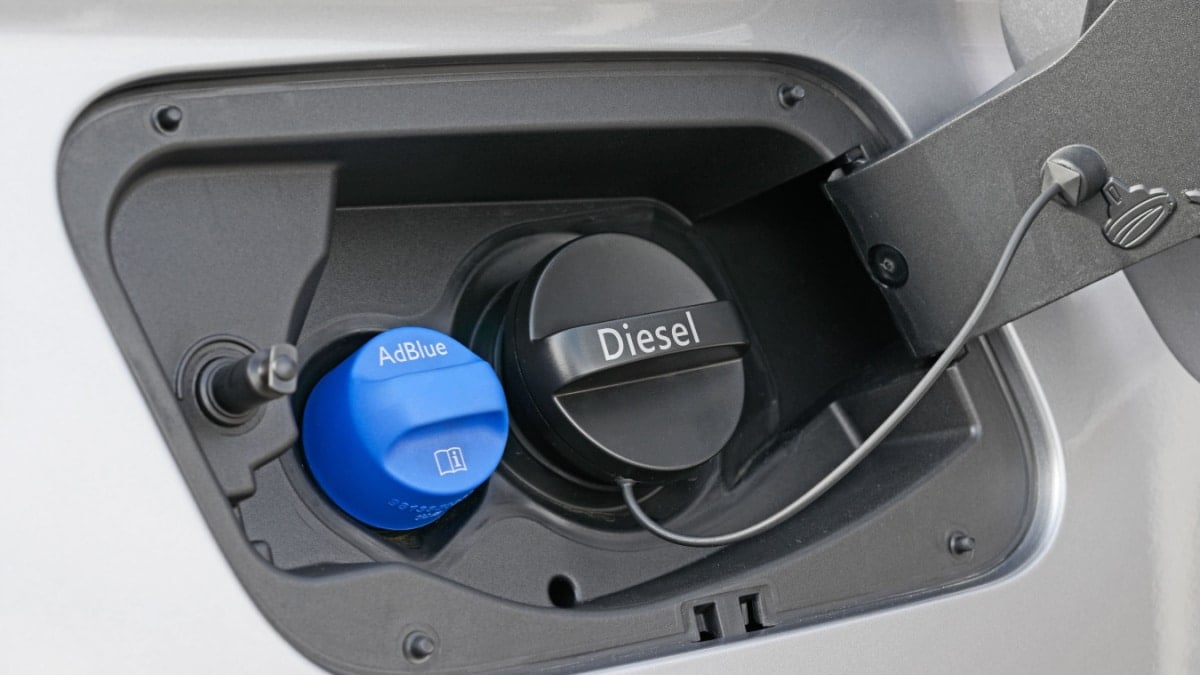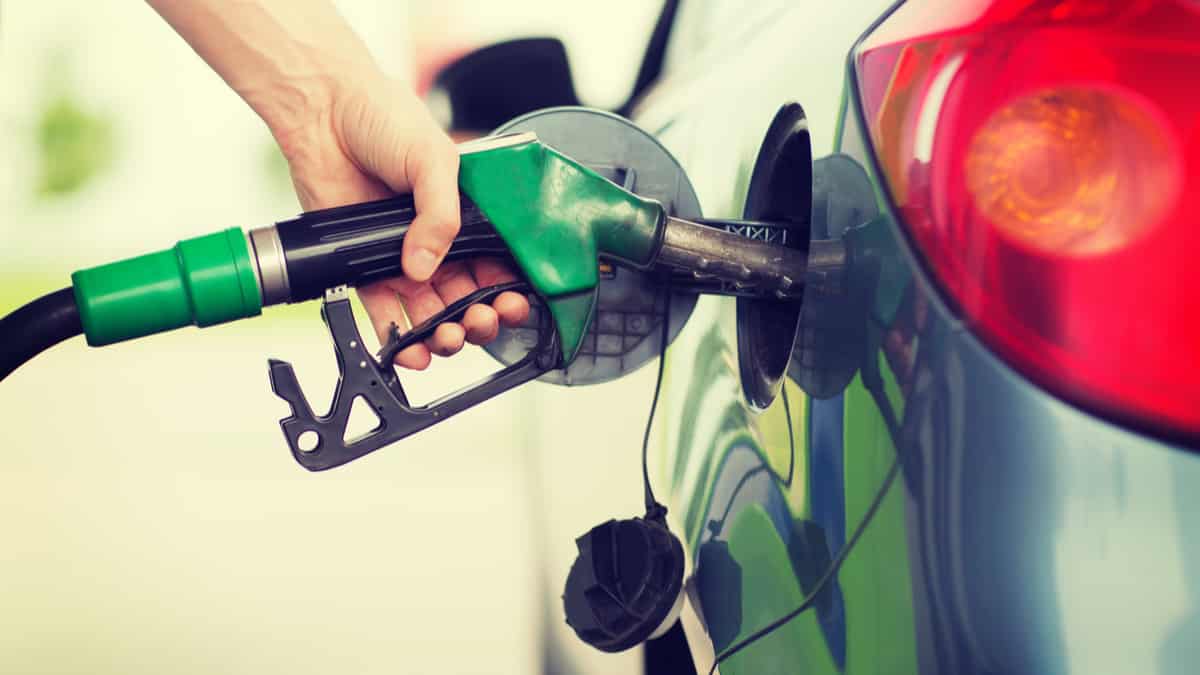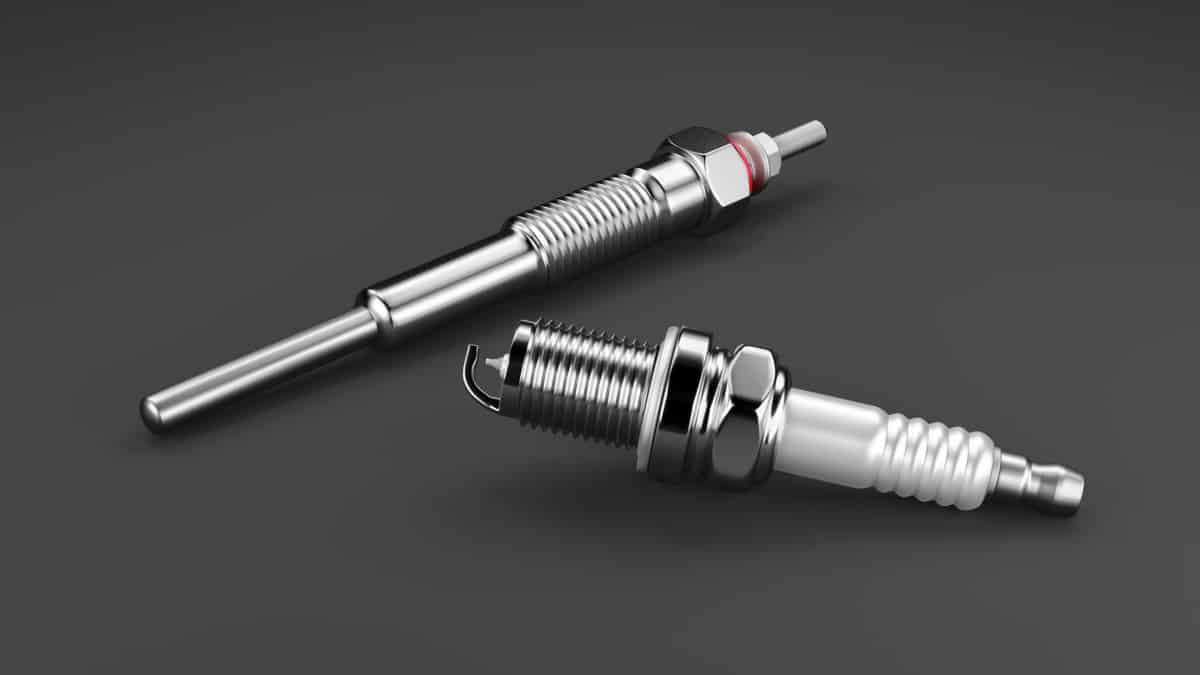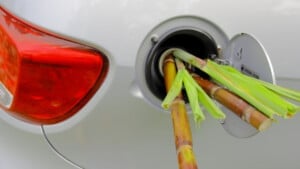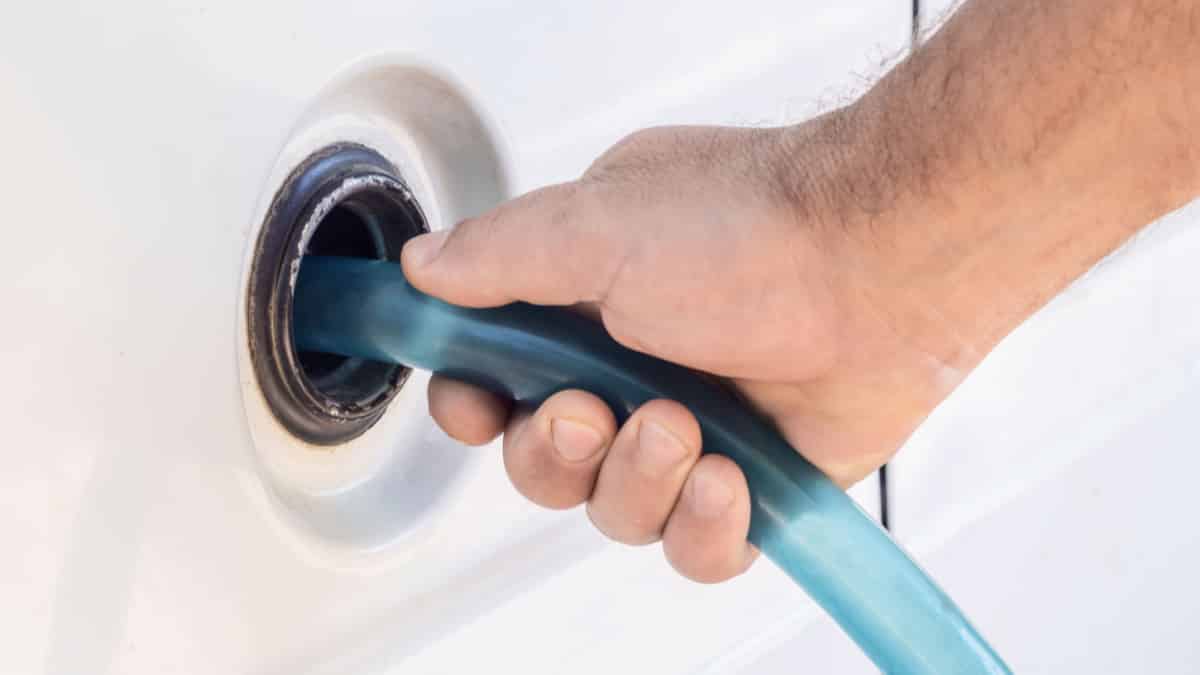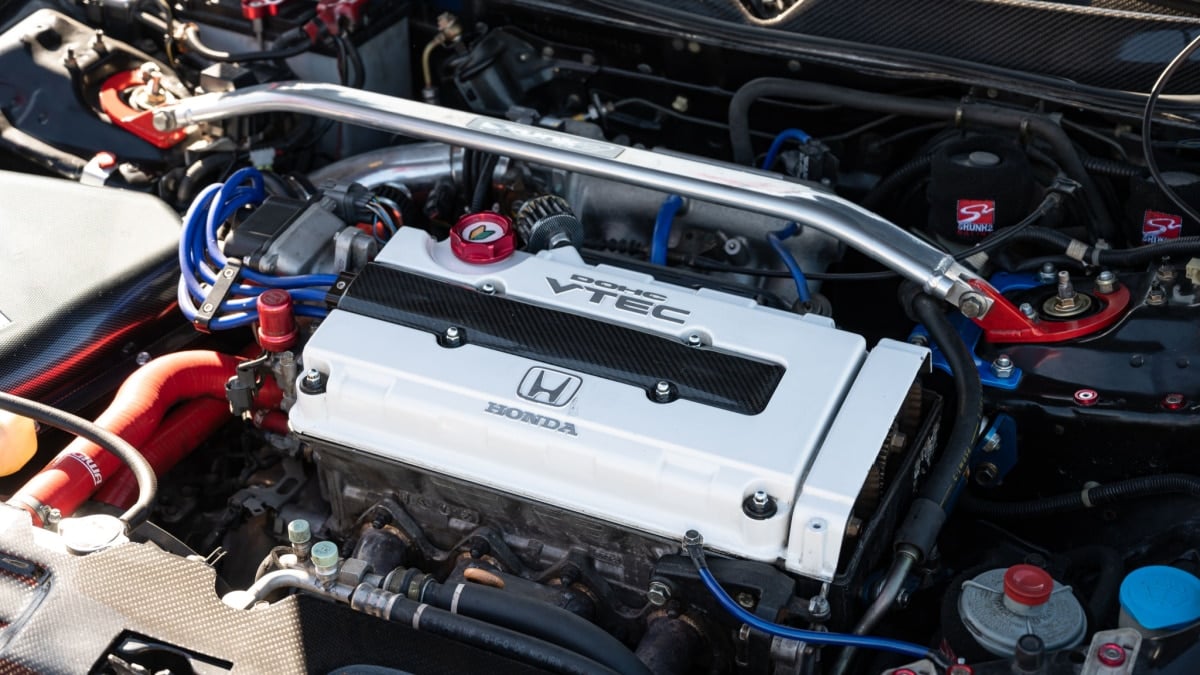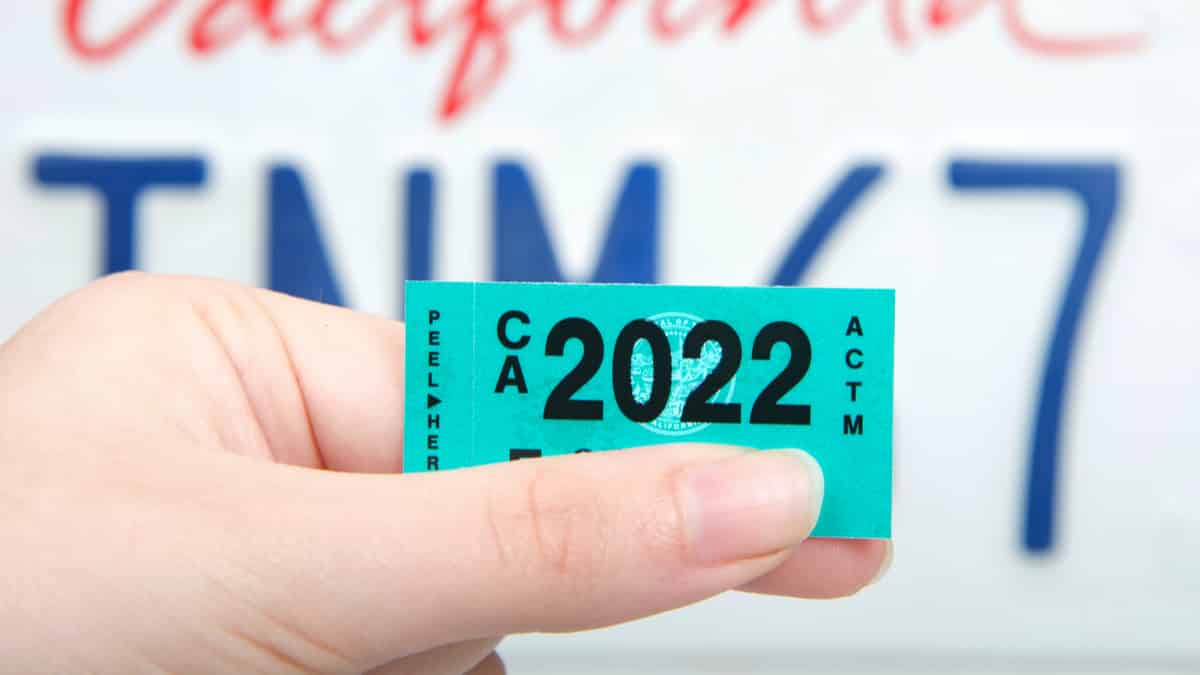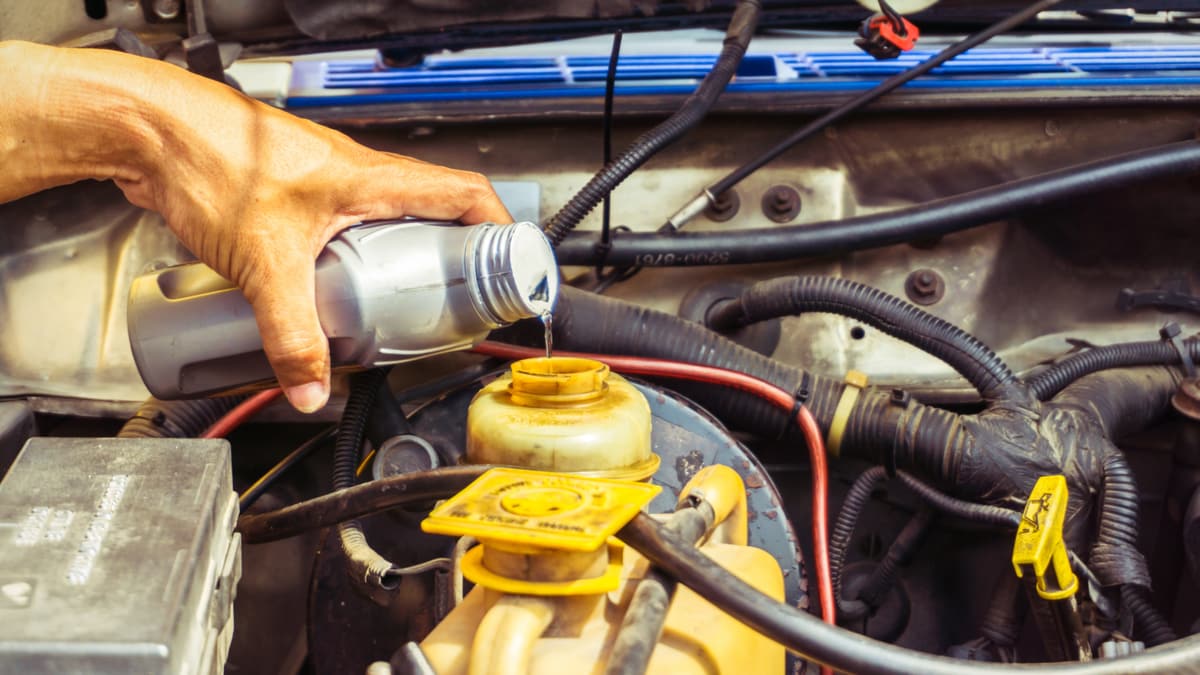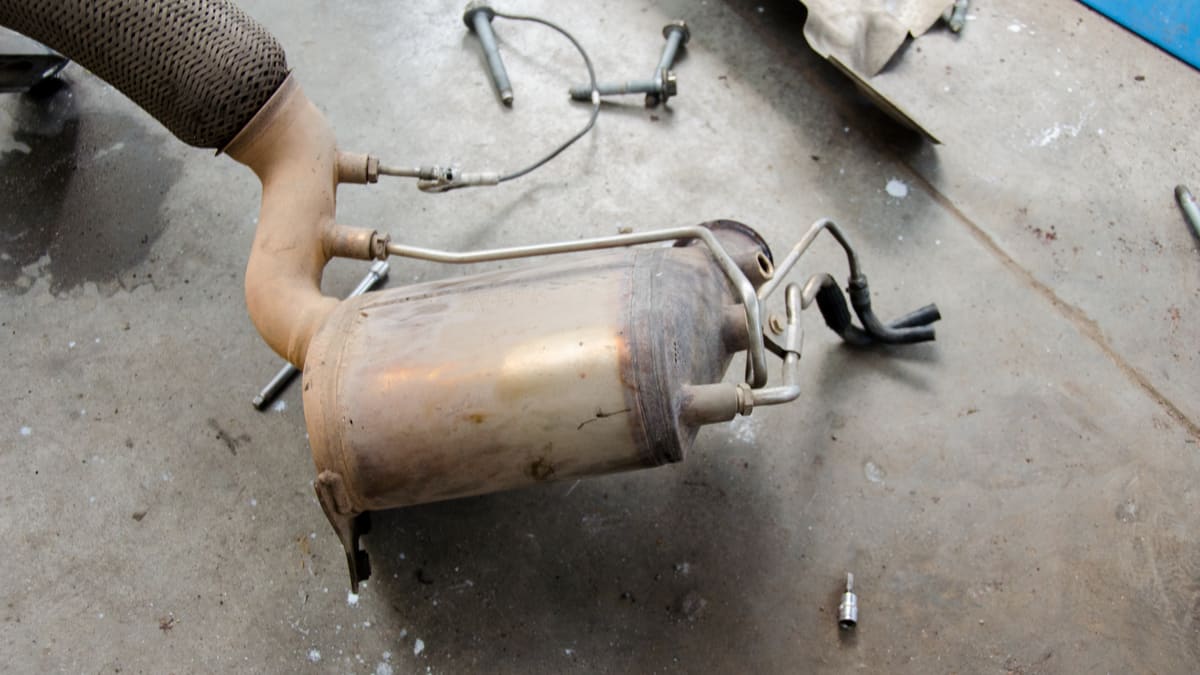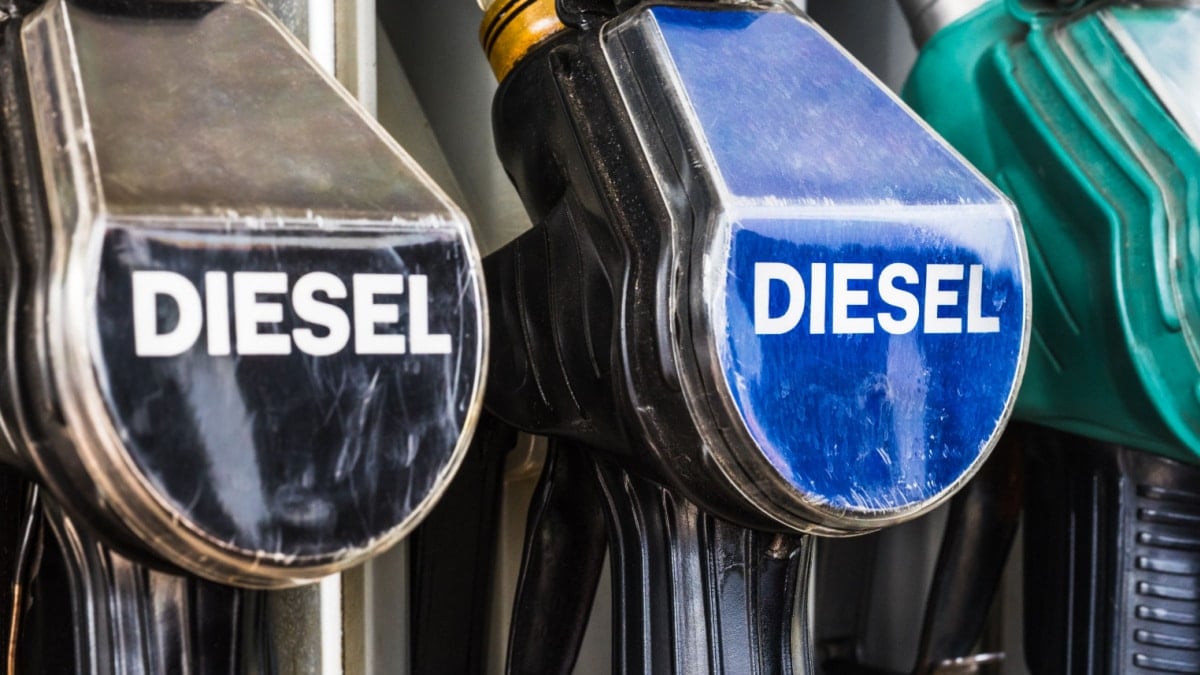If you drive a diesel vehicle, you may have heard of AdBlue but could lack familiarity with its purpose. Should you be using AdBlue and is it required? These are important questions to ask before you drive.
In this guide, we cover the basics of AdBlue. We look at how it works, what it’s made from and what cars require it. Additionally, we evaluate the effect on fuel consumption and examine the cost. At the end of this article, you’ll find some answers to your top AdBlue questions.
What is AdBlue?
AdBlue is the brand name of a diesel exhaust fluid that’s owned by the German Association of Automotive Industry. It’s not a fuel additive but is meant to be used with newer diesel vehicles that have a Selective Catalytic Reduction (SCR) exhaust treatment system.
AdBlue is poured into a stand-alone tank near the diesel tank. It’s a non-toxic exhaust fluid to treat the engine and reduces emissions.
How Does AdBlue Work?
With a typical diesel engine, oxygen and nitrogen react at the higher temperatures to create nitrogen oxide. It’s a natural byproduct of the fuel combustion. Modern diesel vehicles are built with a Selective Catalytic Reduction (SCR) exhaust treatment system. This emissions control system is designed to reduce nitrogen oxide emissions for a cleaner environment.
When AdBlue is put into the exhaust system, it gets hot. The higher temperature creates a reaction with the exhaust gases that degrades the mono-nitrogen oxides that are harmful. During this process, the gases are converted into water (H2O) and nitrogen (N3), both of which are harmless to people and the environment. In total, it filters out over 90% of the harmful emissions.
With the help of AdBlue, diesel vehicles now meet the emissions limits set through the European standards, known as Euro 6. These are a standard for all new vehicles sold in the United States and the European Union.
What is AdBlue Made of?
AdBlue is a brand name of diesel exhaust fluid. It’s not the only one on the market, but it’s a popular option. AdBlue contains a blend of deionized water and urea. The amount of urea in the liquid is 32.5%, while the other 67.5% is deionized water.
The deionized water is the solvent needed to turn solid urea, which are colorless crystals, into a liquid solution. All diesel vehicles with this exhaust technology contain a urea concentration sensor. For this reason, you should never attempt to dilute AdBlue or pour in an incompatible liquid. Additionally, despite urea being found in urine, this liquid should never be used, either.
AdBlue is an odorless and toxic-free liquid. However, it’s still going to create a mess when spilled. It can also corrode certain metals, so you should store and transport it carefully. If AdBlue gets on your skin or clothing, you want to clean it off immediately.
Which Cars Need AdBlue?
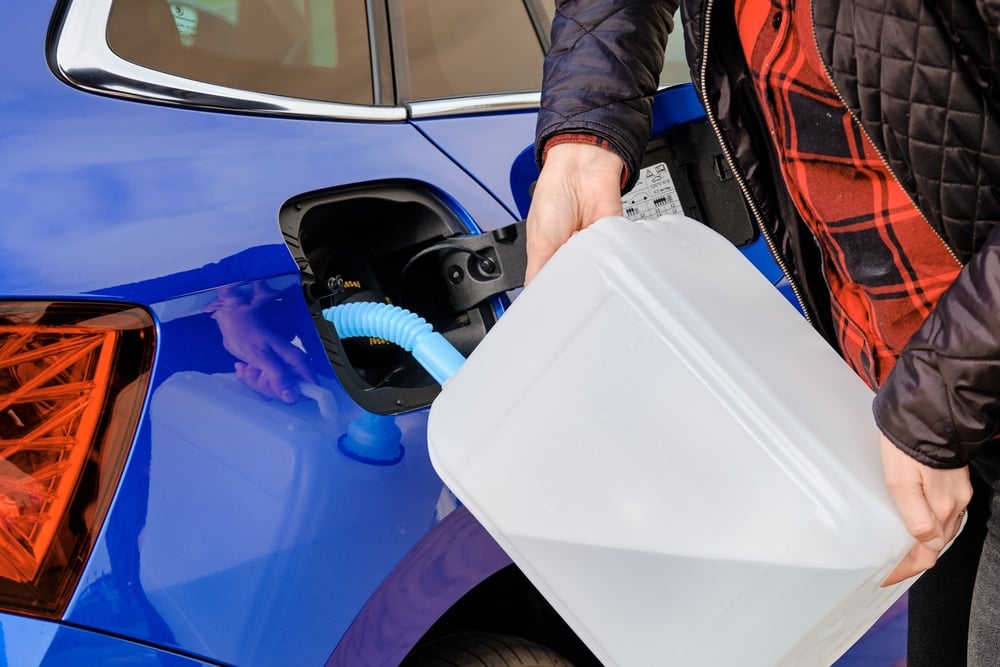
All diesel vehicles built after 2015 with more than 74 horsepower come equipped with SCR technology in Europe. These are required to use diesel exhaust fluid, such as AdBlue.
If you don’t use diesel exhaust fluid in these vehicles, the engine will typically not start. If it does, it will go into a limp mode, which is a low-power process that makes it possible to drive home.
For this reason, you must monitor the level of the AdBlue and refill it when it gets low. Cars have a warning light on the dashboard to tell you before the fluid runs out.
Does AdBlue Affect Fuel Consumption?
AdBlue and other diesel exhaust fluids are only used to reduce the emissions coming from the diesel motor. These fluids and the SCR technology have nothing to do with fuel consumption, nor do they affect the performance of the diesel motor.
To improve diesel fuel mileage, consider these tips.
- Turn off the engine when you aren’t driving. Idling wastes a lot of unnecessary fuel.
- Don’t rev the engine. Try to keep acceleration slow and steady.
- Remain at a cruising speed. Avoid speeding up and slowing down excessively.
- Maintain a good following distance. Anticipate what’s coming so you can avoid braking and speeding back up.
- Reduce your load. If you have items in your vehicle that aren’t needed, take them out. Extra weight requires more fuel.
- Keep tires properly inflated. Under and overinflated tires have a profound effect on fuel economy and safety.
By making a few minor adjustments, you can get further on a tank of diesel fuel.
Where Can I Buy AdBlue and How Much Does it Cost?
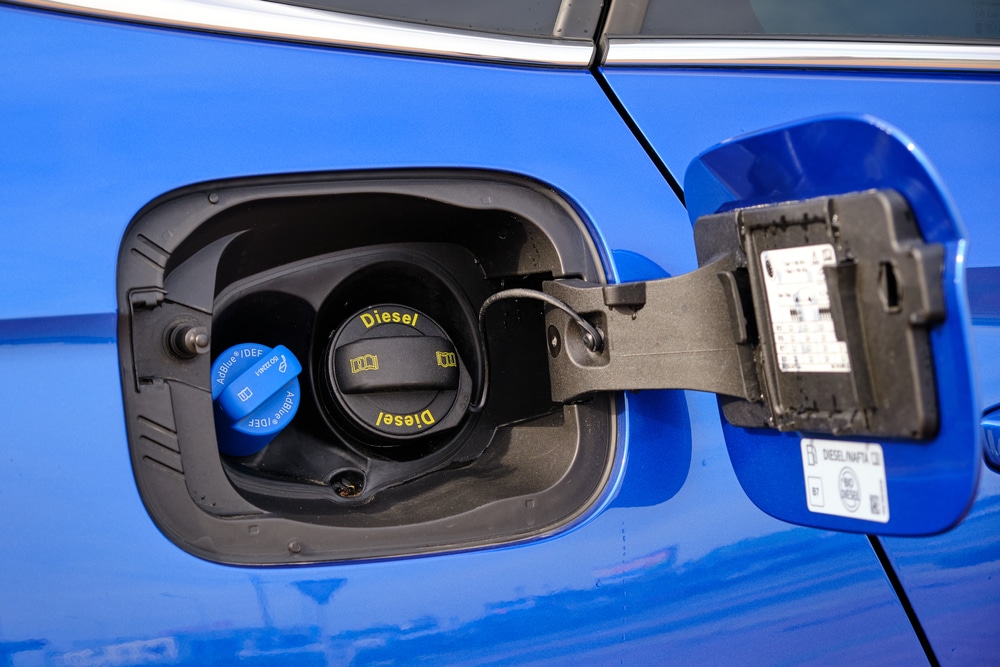
AdBlue is sold at fuel filling stations in portable containers, along with other types of diesel exhaust fluid. It can also be purchased online or from all of the major big-box retailers. While the majority of DEF brands cost about $5.00 to $7.50 per gallon, AdBlue tends to have a higher price.
Additionally, AdBlue is sold commercially in 2.6-gallon barrels. Because your vehicle may not need this much, most people don’t purchase it this way. AdBlue doesn’t have a long shelf life, so it will go to waste if you don’t use it soon. Unless you have someone to share it with, you don’t want to purchase it this way, even though it might be cheaper per gallon.
How to Refill AdBlue
Every diesel owner should know how to check and refill the AdBlue port. The direction remains the same whether you use AdBlue or another diesel exhaust fluid.
1. Take Precautions
Before you work with any diesel exhaust fluid, you must put safety measures in place. Fluid should never come in contact with your skin or your clothing. It can also cause damage to the vehicle if spilled on the paint. If you do spill any, clean the area with water immediately.
It’s also wise to read the owner’s manual directions ahead of time. Your vehicle manufacturer may have other safety precautions worth noting.
2. Check Levels
According to most regular maintenance schedules, tanks should be filled every six months if they aren’t filled sooner. However, all vehicles go through a different amount of AdBlue at a time. It all depends on how big the engine is, what type of fuel economy it gets and how it is driven.
On average, one gallon of AdBlue is consumed every 1200 to 2400 miles. For this reason, you wouldn’t need to refill every time you get diesel fuel. Depending on how big your fuel tank is, you may visit the station multiple times before you need DEF.
However, all compatible vehicles are also equipped with a dashboard warning system that tells you when the levels are getting low. The amber light should go on when the levels drop below 10%. As they get even lower, the light will start flashing, so you have no excuse for letting the tank run dry.
You can also check the DEF tank manually on some vehicles, but not all. There’s a storage tank located next to the diesel fuel tank. Otherwise, you will find it near the spare tire. Either way, you should be able to see how much fluid is left inside.
3. Determine How Much is Needed
You don’t want to pour in too much AdBlue. Read the owner’s manual of your vehicle to figure out how much you should put in.
Most cars consume DEF at a two to three percent rate compared with how much diesel fuel is used. For example, if your vehicle has a 30-gallon fuel tank, you may need 0.6 to 1 gallon of AdBlue during a fill-up.
4. Fill Up Tank
To fill up the DEF, you must first find the fill port. It’s typically under the hood or next to the diesel fuel-filling port. It will be a different size than the diesel port, so you don’t accidentally fill the wrong one. It’s also clearly labeled.
With a funnel, slowly add the DEF to the tank. Do not overfill the tank or you risk spilling it on the ground.
Can I use water instead of AdBlue?
Water should never be added to the AdBlue port by itself or mixed with DEF. AdBlue is a careful mixture of 67.5% deionized water and 32.5% urea. Tap water contains minerals and other ions that are harmful to the exhaust treatment system. By using water, you can create expensive damage to the system.
Can you put AdBlue in any diesel car?
AdBlue can be placed in any diesel vehicle with a DEF port. It should never be added to the fuel tank. Additionally, AdBlue and other DEF brands can be used interchangeably based on which one you prefer and what’s available in your area.
What does AdBlue actually do?
AdBlue converts emissions gases into harmless water (H2O) and nitrogen (N3). Both of these gases are harmless to the environment and won’t hurt people either. In total, AdBlue helps to convert more than 90% of the harmful emissions out of exhaust gases.
How long does 1 liter of AdBlue last?
Based on estimates, a mid-size vehicle will go through a liter of DEF every 600 miles or so. However, every vehicle is different, which is why you want to read the owner’s manual to see the specifications for your particular model.
Will my car stop working without AdBlue?
If you allow the AdBlue tank to run empty, the vehicle will go into a limp mode until you get it home. Once you turn the engine off, it probably won’t restart until DEF is added. However, all compatible vehicles contain an alert that tells you before the fluid runs out, so you can refill it before there are problems.
How often do you need to refill AdBlue?
Some people top of the system at every fuel fill-up, but that’s not necessary. A liter of AdBlue might last around 600 miles on a normal mid-size car, so you can estimate when a fill-up is required. You can also wait until the warning light comes on before you put more AdBlue in the system.
Is it safe to drive with the AdBlue warning light on?
When the light first comes on, the system tells you that 10% of the fluid remains. This allows for plenty of time to fill up the tank. Even as it gets dangerously low, the light will start to blink. By this time, you should be ready to fill up before the engine goes into limp mode.
If your diesel vehicle requires DEF, you may consider using AdBlue. This brand-name DEF is known for reliability and is a top choice among drivers. It is perfectly balanced to work with diesel engines that have a Selective Catalytic Reduction (SCR) exhaust treatment system.
Look for AdBlue at your local filling station or purchase it online. You can also find it at auto parts stores, so you always have it ready to go when the system gets low.
Learn more:
- What Happens If You Overfill Your Gas Tank?
- Do Diesel Engines Have Catalytic Converters?
- What Happens if You Put Gas in a Diesel Engine? (& What to do?)
Categories: General
